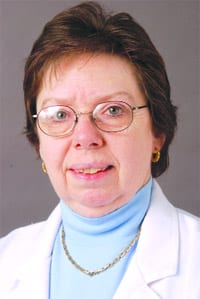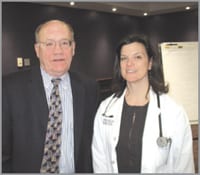CDH Helps Guide Breast Cancer Patients with Navigator Program
NORTHAMPTON — Madelyn Breen makes the health care system work for her patients.
With more than 30 years as a registered oncology nurse and case manager, Breen is skilled at helping patients understand the ins and outs of hospital and community-based care. In her new role as Cooley Dickinson’s first registered nurse in the Patient Navigator Program, Breen helps patients with a suspicious or abnormal mammogram understand what’s next.
“The goals of the Patient Navigator Program are to assist patients with navigating the increasingly complex health care system and guide them through the diagnostic process,” said Breen. “Trying to grasp the reality of the diagnosis itself can be overwhelming, and having an informed, experienced contact person to help sort out all the information can be invaluable.”
As a patient navigator in the Cancer Care Program, Breen serves as a resource and an advocate for patients, providing emotional support, coordinating care, and offering referrals to surgeons, medical oncologists, radiation oncologists, social workers, pastoral care providers, and community resources. She also works to identify any barriers to care a patient might encounter, such as lack of transportation or child care, or low finances, and provides educational materials.
“We are committed to helping our patients schedule clinical follow-up appointments for a time that is not only convenient for them but timely in terms of further diagnostic testing or surgical procedures,” said Mary Ellen Walsh, MA, LCSW, Cancer Care Program director. “Madelyn’s interventions assist at the earliest stage of a patient’s journey by being able to connect the patient with the appropriate resource.”
Breen started in her new role at Cooley Dickinson in July, and as of early October, she had seen more than 50 patients. “The feedback’s been very good,” she said. “Patients like the fact that they have someone they can just pick up the phone and call for any reason whatsoever.”
Breen says women have called her with questions about symptoms. Others want to sit down and talk about their post-operative care. “One person called … wanting to know what’s normal. She said she didn’t know who else to call, so she called me. That’s just the idea. We don’t want patients sitting at home and wondering. They can just pick up the phone and call, and I can try to decrease some of the anxiety.”



Comments are closed.